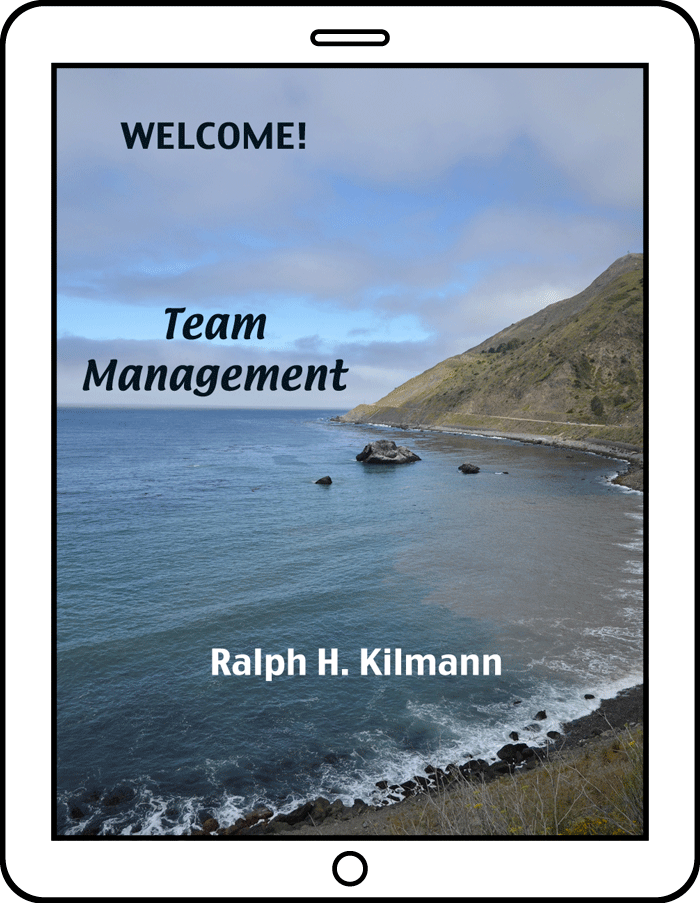
How to combine this online course with live discussions
The members of the same work group (whether a department, task force, project group, cross-functional team, or process improvement team) will gain extra benefits from taking any of our online courses AS A GROUP. Rather than members of an organization taking our online courses separately and thus independently, learning key principles and practices with your workplace colleagues will not only enhance what every member learns from our online courses, but will also make it much easier to apply what is learned back on the job—where it counts.
Basically, when all group members (1) learn the same language and the same concepts, (2) review the same assessment tools and their personalized results, (3) analyze and discuss the same business cases, and (4) follow the same guidelines for effective behavior—BECAUSE all these principles are fully shared in the group, they are more likely to be put into practice when challenging problems and conflicts appear in the workplace.
On this page, I outline how a work group can take full advantage of all the valuable materials in the Team Management Course. The unnumbered paragraphs describe what members are asked to do on their own, such as watch the course videos, take assessment tools, or complete work sheets in their course manual. Meanwhile, the numbered paragraphs provide the detailed steps for learning the material through face-to-face or virtual group meetings. Depending on the unique circumstances and needs of each group, this process for blended learning can be adjusted or expanded.
THE DETAILED STEPS
On their own, group members watch the first four video sections in the course, which cover pages 1 to 30 in the Course Manual for Team Management. Members then watch the video section on Kilmanns Time-Gap Survey and then take the survey on pages 31 to 41, score their responses on pages 42 to 43, and graph their results on pages 44 and 45 (being guided by my instructions on the video).
Members then view the video section on Defining Five Time-Gaps on pages 61 to 66 and the video section on Work Sheets for Closing Time-Gaps on pages 67 to 84. (When members have a chance, they might find it worthwhile to review the interpretive materials on pages 50 to 60 of the Time-Gap Survey.) The group then reconvenes for a sixty-minute meeting to discuss these items:
1. As a group, members review the instructions on page 66 (Group Discussion on Closing Time-Gaps), appoint the Process Observer (who makes use of the PO Form on pages 9 to 12), and then plan how the meeting will be conducted.
2. After discussing the five time-gaps and reviewing their individual lists on the Work Sheets, the members calculate and graph their group’s Time-Gap Profile on page 72. They then follow the steps of problem management on the remaining pages of the Work Sheets. On page 84, they consider how to expand the use of their sanctioning system in order to close their largest—most damaging—time-gaps.
3. Toward the end of the group discussion, in five to ten minutes, the PO shares his or her assessment of how well the ten principles of group process and time management were applied during the meeting (including what improved, stayed the same, or became worse since the last meeting). The group as a whole then discusses how it will improve its group process the next time it meets.
On their own, group members watch the next video section, which is covered on pages 85 to 90 in the manual. Next, members watch my overview of the Work Sheets for Reuniting the Work Group (pages 91 to 108). In a sixty minute meeting, the work group either proceeds (1) to integrate what the members and their immediate boss have previously learned in separate peer groups or (2) to review what the team has already learned from its prior discussions as an intact group during all our previous online courses.
4. A s a group, members review the instructions on page 90 (Group Discussion on Reuniting the Work Group), appoint a different Process Observer from before (who makes use of the PO Form on pages 9 to 12 in the manual), and then plan how the meeting will be conducted.
5. The intact group (whether using the Work Sheets to reunite itself or to review the material) complete pages 92 to 107, which helps the group identify and then close its largest gaps in those four major categories: Cultural Norms, People Management, Problem Management, and Time Management. On page 108, the group then discusses how to use its all-purpose sanctioning system to make sure it breaks its dysfunctional habits from the past and engages in behaviors that are likely to achieve organizational success in the future.
6. Toward the end of the group discussion, in five to ten minutes, the PO shares his or her assessment of how well the ten principles of group process and time management were applied during the meeting. The group as a whole then discusses how it will improve its group process the next time it meets.
On their own, group members watch the video section on Kilmanns Team-Gap Survey and then take the survey on pages 109 to 135, score their responses on pages 136 to 137, and graph their results on pages 138 and 139. Also on their own, group members view the video section on Defining Four Team-Gaps on pages 151 to 154, followed by the video section on Work Sheets for Identifying Team-Gaps on pages 155 to 168. (When members have a chance, they might find it worthwhile to review the interpretive materials on pages 144 to 150 of the Team-Gap Survey.) The group then reconvenes for a ninety-minute meeting to discuss these items:
7. As a group, members review the instructions on page 154 (Group Discussion on Identifying Team-Gaps), appoint another Process Observer (who makes use of the PO Form on pages 9 to 12), and then plan how the meeting will be conducted. After reviewing the Work Sheets, the members calculate (on page 156) their average gaps for each of the individual items that sum to the four team-gaps: Cultural Norms, People Management, Problem Management, and Time Management. Next, the members plot the four sums of these team-gaps on page 157.
8. On pages 158 to 159, group members rank order their five to ten largest gaps (from the individual items that make up each of the four team-gaps) and then proceed with the five steps of problem management. On page 168, the last page of the Work Sheets, members plan how their all-purpose sanctioning system can help them close their largest team-gaps.
9. Toward the end of the group discussion, in five to ten minutes, the PO shares his or her assessment of how well the ten principles of group process and time management were applied during the meeting. The group as a whole then discusses how it will improve its group process the next time it meets.
On their own, group members watch the video on Continuing Group Discussions on Closing Team-Gaps, which starts on page 169 in the manual. Members then watch my overview of the Work Sheets for Closing Team-Gaps, on pages 171 to 186, which provides the cycle for continuous team building in the future.
On their own, members watch the closing video, which is covered on page 188 in the manual. At that time, they can test their knowledge of the key principles by taking the optional Final Exam for the Team Management Course. Although Kilmann Diagnostics does not award a “certificate of achievement,” receiving a score of 88 or more points signifies that members have passed the exam and have thus learned the key principles of the course.
NOTE: The optional Final Exam for every course can be taken as many as five times, since its purpose is to encourage members to learn the material—not to add stress to their life. However, if someone else purchased these courses for the group, the sponsor (for example, the employer) might require group members to pass each exam as an indication that they’ve learned the material. But Kilmann Diagnostics will not share any exam results if a member happens to score less than 88 points on any occasion for any course. We’ll only inform the sponsor when members pass their exams. Click to see Sample Questions on Each Final Exam.
10. Every three to six months, depending on the work group’s plan, members meet to re-take Kilmanns Team-Gap Survey and then complete the Work Sheets on Closing Team-Gaps (on pages 171 to 186), making use of the same process they followed previously (when they first completed the Team-Gap Survey and the Work Sheets on Identifying Team-Gaps). Indeed, this cycle might be performed a few times a year until the group has transformed itself into a self-managing team with insignificant team-gaps in Cultural Norms, People Management, Problem Management, and Time Management.




